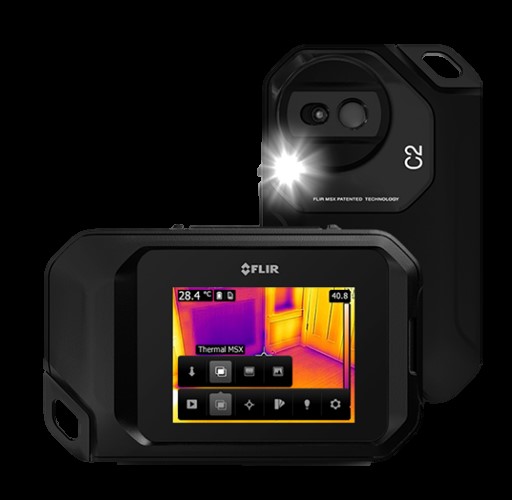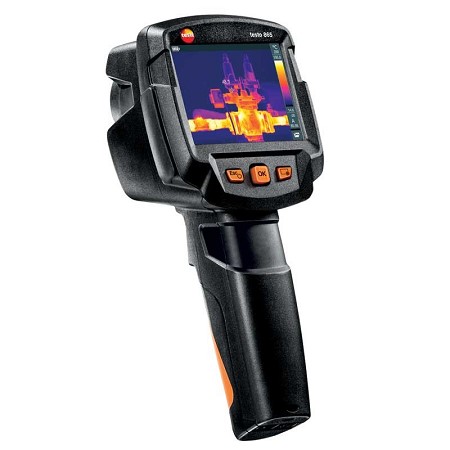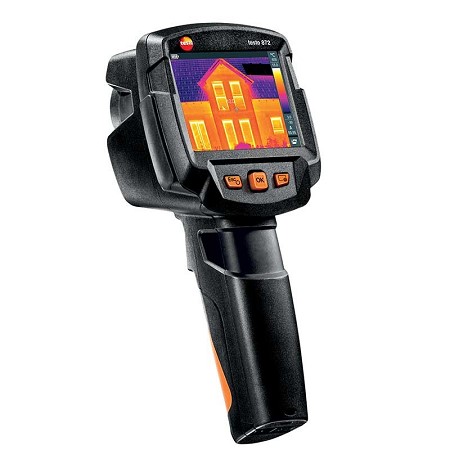Five things you must know before you buy a thermal camera

Thermal cameras are important scientific tools deployed in many applications by technicians such as building inspectors, pest controllers, plumbers and electricians, just to name a few.
There is a huge range of thermal cameras on the market, all with different features and specifications. So, if you were seriously looking to buy a thermal camera how do you sort out the wheat from the chaff? The truth is, it’s subjective. It depends on your needs and intended application. In the guide below we will define the five key performance criteria for selecting a thermal camera, explain the features you can get on different models and, with some contrasting examples, shed some light on the differences.
About Thermal Cameras
Thermal cameras are used to measure the amount of heat radiating off an object or surface. Generally, the hotter an object the more infrared radiation will be given off. They take the emitted infrared radiation and convert it into a picture known as a thermogram. A thermogram uses a scale of either colour or shades of grey to indicate areas of high and low heat.
5 key terms you need to know before selecting a thermal camera
1. Resolution – Resolution is the clarity of a subject and is directly related to the number of pixels a camera has. The higher the pixels, the higher the resolution. There are three standards for thermal camera resolution these are;
<160 x 120 (19,600 Pixels – Low resolution)
320 x 240 (76,800 pixels – Medium resolution)
640 x 480 (307x200 pixels - High resolution)
The amount of resolution you require depends on your desired application. For example, working on high-risk items such as electrical equipment, you may want a higher resolution camera so you can zoom in and maintain a sharp image while investigating any issues.
2. Thermal Sensitivity – This describes how sensitive your camera is to temperature changes.The amount of thermal sensitivity your camera has will affect the clarity of the subject or item you are investigating. The more sensitive a thermal camera, the more definition there will be between hot and cold boundaries. The less sensitivity the more blurring will be seen between hot and cold boundaries. If you are looking at accounting for small temperature changes or more accurate temperature profiling you should look for a more sensitive device.
The specification for sensitivity will be expressed as NETD this is ‘Noise Equivalent Temperature Difference’.The NETD value is typically expressed in milli-Kelvin (mK). The higher the NETD, the less sensitive the camera is to contrasting temperatures, the lower the NETD the more clarity you will have in an image. An easy way to remember this is less noise = greater clarity.
3. Accuracy – The temperature accuracy specification may be expressed as either a:
- percentage of the total reading
- plus or minus (+ or -) a set value; or
- combination of both.
Where precision counts it is important to select a camera with high accuracy.
4. Adjustable emissivity – Emissivity is a measure of how effectively a surface can emit energy as thermal radiation. It’s expressed on a scale of 0 to 1, with 0 being a perfect reflector and 1 absorbing all incoming radiation and not reflecting any. Most thermal cameras have a default emissivity of 0.95, which is suitable for a wide range of uses. For really accurate results it’s important to have an idea of the emissivity coefficient of the item you wish to measure. See our guide and common examples here. Depending on the intended use you may need a thermal camera with adjustable emissivity. If you’re not sure as to your needs you can contact one of our team of scientists for advice (see contact details below).
5. Field of view – Field of view is the observable area that the camera can see. It is expressed in angular degrees (not to be confused with temperature). The measurement is determined by the combination of lens, sensor size and distance from the object or surface being measured. If your application requires you to measure an object from a distance you will need a camera with a smaller field of view. If regularly measuring up close a thermal camera with a wider field of view is needed.
In addition to the field of view, some thermal camera specifications may list the term spatial resolution or instantaneous field of view (IFOV). This is the smallest detail within the field of view that can be seen at a distance. This is measured and will be displayed on the specification as mRads. Essentially, the smaller the mRad number the more detailed the image.
Examples of Thermal Cameras
Our team of scientists have assembled some examples of thermal cameras with varying specifications. The idea is to help you can get a feel of the variation between available models and how this can affect your choice of camera.
FLIR C2 Compact Professional Thermal Camera 
Product Code IC72001-0101
A pocket-sized thermal camera that’s perfect for a wide range of building, electrical, mechanical and maintenance use. Built with a generous field of view and high sensitivity the FLIR C2 is a powerful thermal camera.
- Resolution: 80 x 60 pixels (4800)
- Thermal Sensitivity: 100mK
- Accuracy:Accuracy: ±2 C or 2%, whichever is greater at 25°C
- Emissivity: Adjustable matte/semi/glossy + user set
- Field of view: 41° x 31°
Testo 865 Thermal Imager 
Product Code: IC-0560 8650
Built to detect temperature differences as little as 0.12°C, the Testo 865 has a great resolution to ensure precise thermography. Ideal for building inspectors, electricians, plumbers and for conducting routine preventative maintenance.
- Resolution: 160 x 120 pixels
- Thermal Sensitivity: 120mK
- Accuracy: ±2 °C or ±2 % of measured value. Whichever is greater
- Emissivity: 0.01 to 1
- Field of view: 31° x 23°
Spatial Resolution: 3.4 mRad
Testo 872 Thermal Imager 
Product Code: IC-0560 8721
The Testo 872 thermal camera is ideally suited for professional industrial and building thermography. It ensures your work is accurate, quick and easy.
- Resolution: 320 x 240 pixels - extendible to 640 x 480 pixels.
- Thermal Sensitivity: 60mK
- Accuracy: ±2 °C, ±2 % of the measured value
- Emissivity: Adjustable from 0.01 to 1
- Field of view: 42° x 30°
Spatial Resolution: Depending on extendable resolution it ranges from 2.3 mRad to 1.3 mRad.
Conclusion
Thermal cameras are powerful troubleshooting tools used in a wide variety of industries, particularly the construction and building services industries. Knowing the 5 key things you need before selecting the right thermal camera for your application is the best place to begin your search. Armed with this knowledge you can browse many more examples of thermal cameras on the Instrument Choice website.
If you still have technical questions or need a hand finding the right thermal camera for your application call one of our helpful scientists on 1300 737 871 or email [email protected]. We answer all questions within three business hours.
Also interesting
Given current world events, it's likely that you will see fever detection devices used as a preliminary screening device in office buildings, factories, airports, and other public places. Fever detection cameras provide a convenient 'frontline' health monitoring solution. In light of this, we have written an article to explain how fever detection cameras work. We also highlight some critical specifications,list different types of calibration to help ensure accurate readings, and point out some of the limitations of these instruments.

The Expert Data Logger series, manufactured by Delphin, is a new generation of data loggers. It combines the latest communication technology with advanced measurement technology and FPGA processing, making it especially powerful for applications where users have multiple and flexible sampling schedules.

